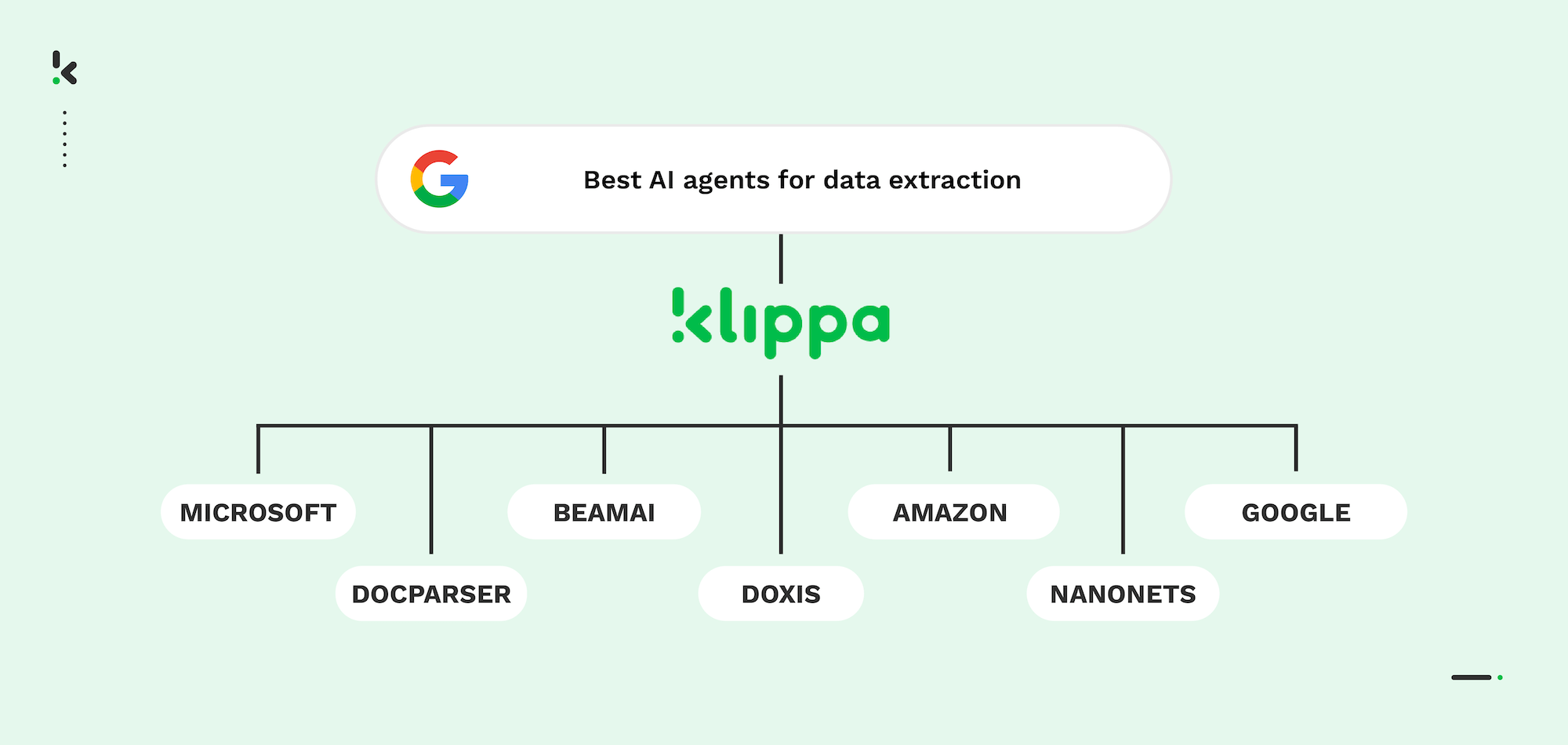

Capturing data from documents remains a challenge across industries. Whether it’s totals from an invoice, details in a contract, or shipment information buried in a table, manual entry is slow, costly, and prone to errors. Even with traditional OCR, inconsistent layouts, poor image quality, and complex formats can still cause problems.
Modern AI agents are designed to solve these issues. By combining Optical Character Recognition (OCR), Machine Learning (ML), Natural Language Processing (NLP), and advanced layout analysis, they interpret documents like a human, but deliver results at machine speed and with exceptional accuracy.
SER Group’s IDP Survey 2025 confirms this shift is well underway: 66% of enterprises are replacing outdated document processing systems with AI-powered solutions to meet the growing demands for speed, scalability, and accuracy.
In this guide, we’ll explore what AI agents are, the capabilities shaping the best solutions, key criteria for choosing the right one, and why Klippa DocHorizon is a leading choice for businesses ready to streamline and future-proof document processes.
Ready?
Key Takeaways
- AI agents outperform traditional OCR by understanding document context, structure, and mixed formats for higher accuracy.
- Enterprise adoption is rising — 66% of companies are replacing outdated systems with AI-driven document processing.
- Cross-industry benefits include faster workflows, better compliance, and reduced manual effort in finance, healthcare, logistics, and more.
- Klippa DocHorizon leads with >99% accuracy, real-time results, GDPR compliance, and seamless system integrations.
What Are Document Data Extraction AI Agents
An AI agent in document processing is an intelligent system that uses OCR, machine learning, and natural language processing to automatically read, understand, and extract structured data from documents with higher accuracy and adaptability than traditional OCR.
Instead of “just” converting text from an image into digital characters, AI agents combine several advanced technologies to understand what’s on the page and how it’s structured:
- Optical Character Recognition (OCR): Transforms printed or handwritten content into machine-readable text.
- Machine Learning (ML): Learns from vast datasets to recognise patterns, adapt to new document types, and improve over time.
- Natural Language Processing (NLP): Understands relationships between words, identifies key-value pairs, and processes tables or multi-column formats.
- Layout Analysis: Detects how information is arranged so forms, tables, diagrams, and mixed formats are interpreted correctly.
This combination means AI agents can handle almost any document format, from high-quality PDFs to low-resolution scans, and deliver clean, structured data without manual corrections.
Why They Matter to Modern Workflows
The business case for AI agents is clear:
- Speed: process documents in seconds rather than hours.
- Accuracy: minimise errors compared to manual input.
- Scalability: handle millions of files with consistent performance.
For banks, insurers, hospitals, logistics providers, and public institutions, these capabilities aren’t just convenient; they’re critical. An AI agent can replace repetitive, error-prone tasks with dependable automation, giving teams more time to focus on analysis, approvals, and decision-making rather than data entry.
The 8 Top AI Agents for Data Extraction & Processing in 2025
AI agents use advanced technologies to automate reading, interpreting, and extracting data from documents. The five solutions below represent some of the most capable options available today, each with distinct strengths.
1. Klippa DocHorizon
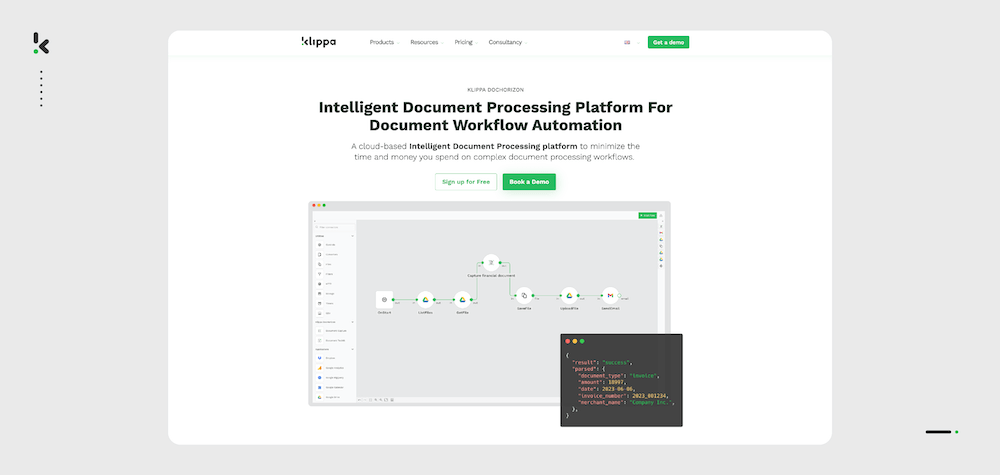

Klippa DocHorizon is an AI-powered document processing solution built for speed, accuracy, and seamless integration. Designed to work in real time, it delivers extraction results in under five seconds while maintaining enterprise-level compliance.
With millions of documents used to train its machine learning models, DocHorizon handles diverse layouts across dozens of languages, making it adaptable to almost any industry.
Features:
- Real-time processing for invoices, receipts, IDs, contracts, and more
- Trained on millions of layouts for exceptional OCR accuracy
- Supports multiple languages and document formats
- GDPR-compliant data handling, with zero data storage without consent
- Developer-friendly REST API, SDKs, and clear documentation
- Human-in-the-loop review for near 100% accuracy
- Cloud-native for scalable deployment
2. Doxis by SER Group
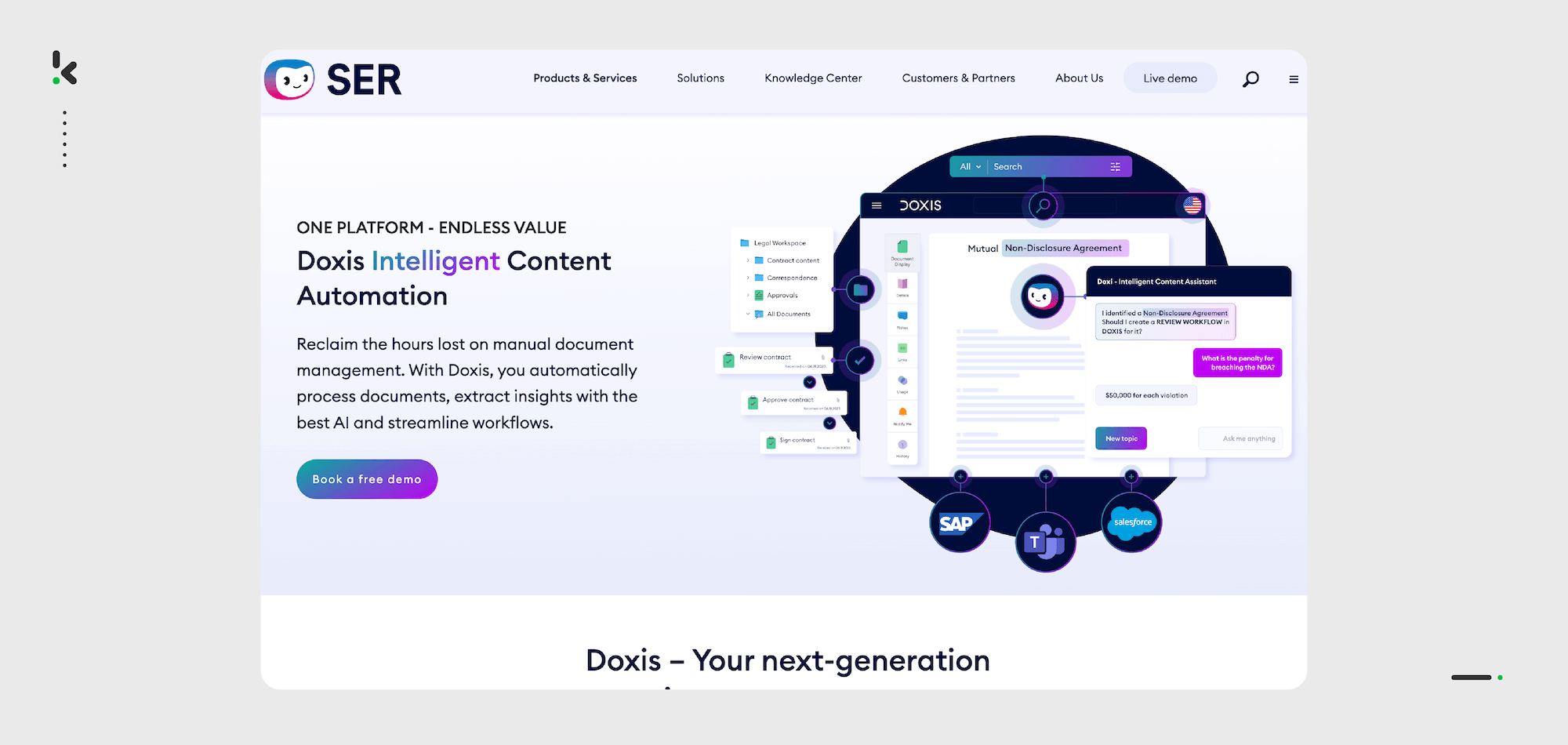

Doxis combines AI-backed extraction with the full functionality of a Document Management System. It processes, stores, secures, and organises documents, making it particularly powerful for enterprises with complex workflows.
Features:
- AI document classification and metadata extraction
- Integrated document storage and archival capabilities
- Workflow orchestration across multiple departments
- Strong compliance and governance functions
- Designed for large-scale document volumes
3. Microsoft Azure AI Document Intelligence
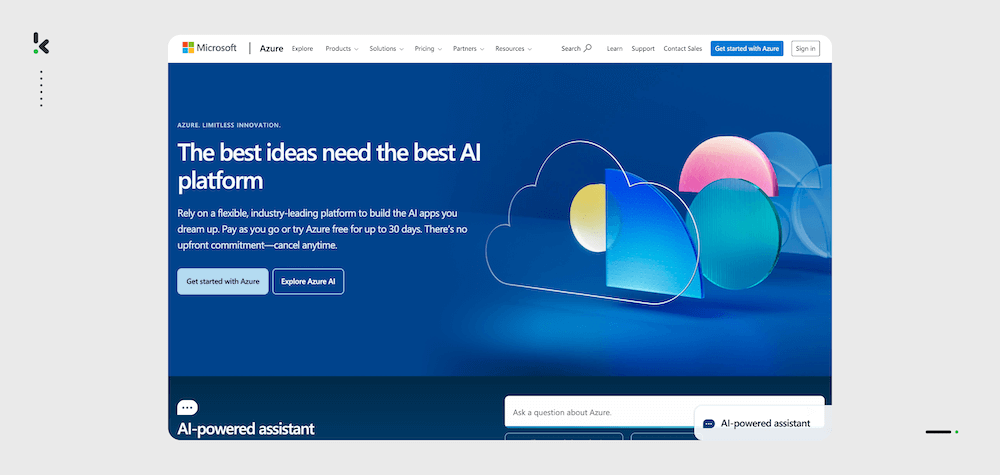

Azure’s AI agent integrates tightly with Microsoft’s cloud ecosystem. It provides pre-built models for common document types and supports custom model training for unique formats.
Features:
- Ready-made models for invoices, forms, and ID extraction
- Custom training for specialised document types
- REST API access for integration into Microsoft-based workflows
- Enterprise-grade security and compliance frameworks
4. Google Cloud Document AI
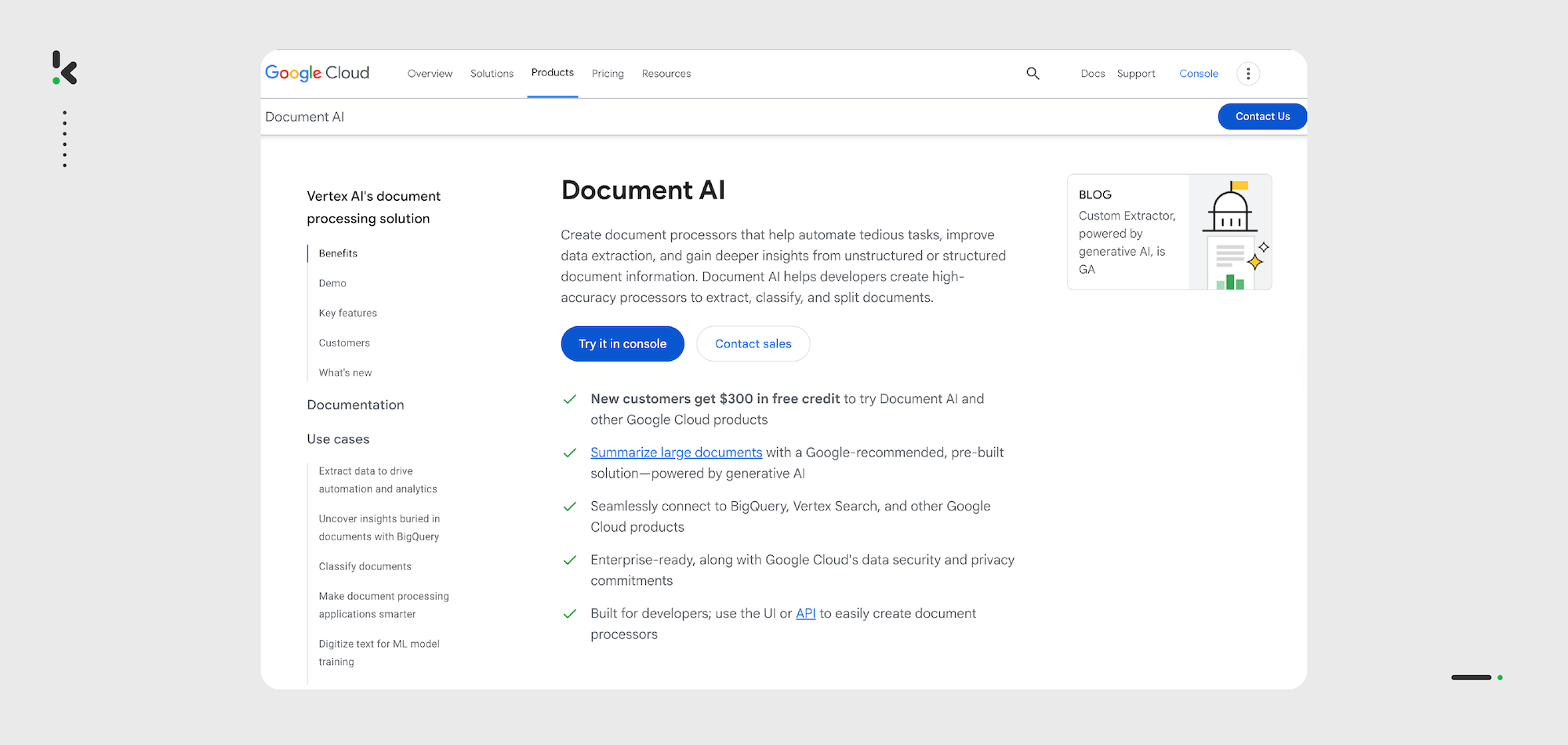

Google Cloud Document AI is known for advanced layout understanding and context analysis. It can manage multi-format and irregular document structures using generative AI methods.
Features:
- Layout-aware document processing with contextual interpretation
- Generative AI for messy or mixed-format inputs
- Easy integration with Google Cloud services
- Scalable batch processing for large workloads
5. Amazon Textract
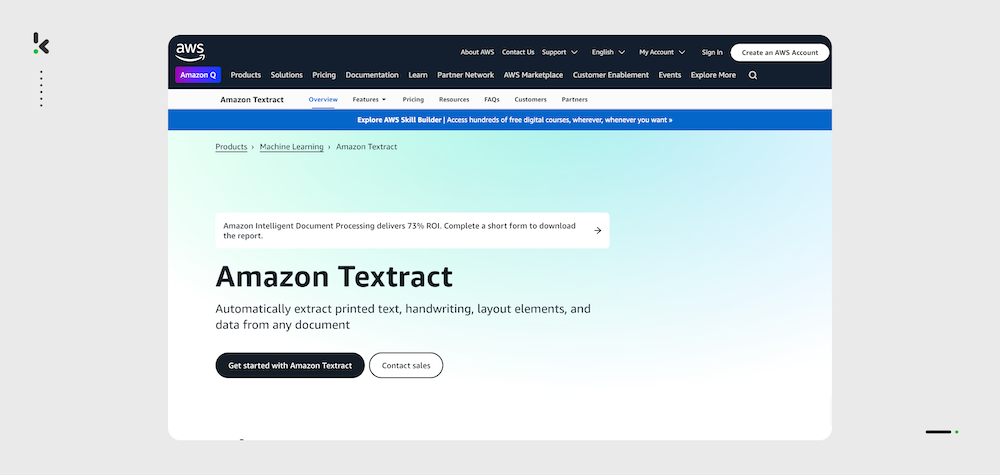

Amazon Textract is designed to extract printed text, handwriting, and structured data with impressive accuracy. It integrates into AWS workflows for automated document handling.
Features:
- OCR for printed and handwritten text
- Key-value pair and table recognition
- AWS Lambda integration for automation
- Highly scalable for large datasets
6. BeamAI
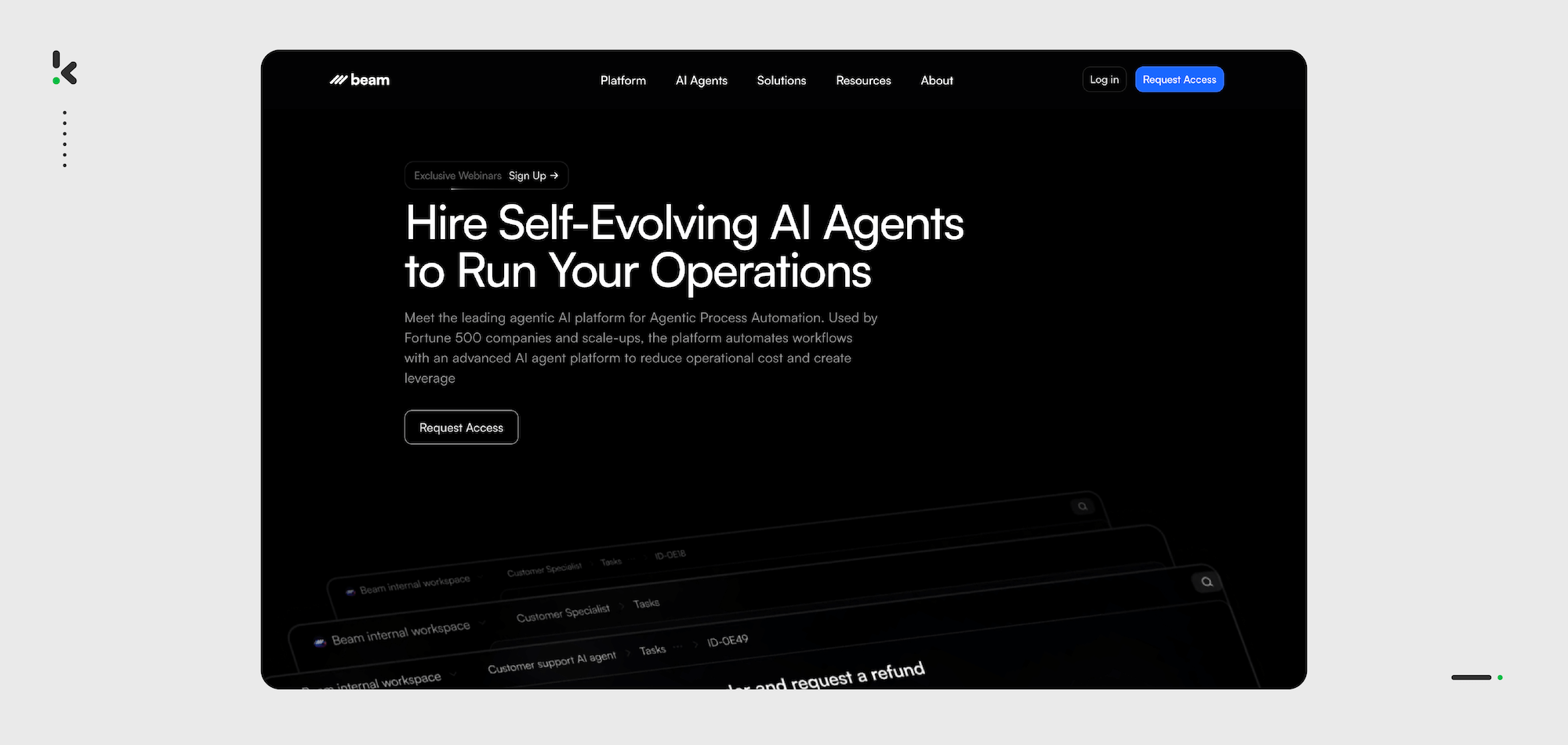

BeamAI takes a multi-modal approach, processing diagrams, tables, and embedded images alongside text. This capability makes it ideal for industries where text is only part of the workflow.
Features:
- Handles diagrams, tables, and images within documents
- Agentic workflows for complex, technical layouts
- Flexible adaptation to industry-specific formats
- Cloud-based scaling for global use
7. Nanonets
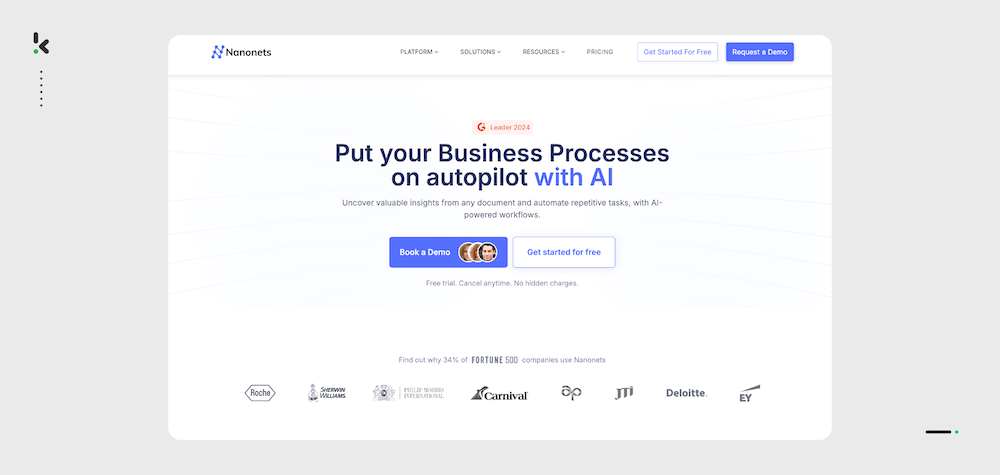

Nanonets offers AI-first OCR with the ability to configure extraction workflows using natural language. This reduces setup complexity and speeds up deployment.
Features:
- Natural language workflow creation
- Custom model training from user-provided data
- Supports images, PDFs, and multi-page files
- Cloud-based scaling with API access
8. Docparser
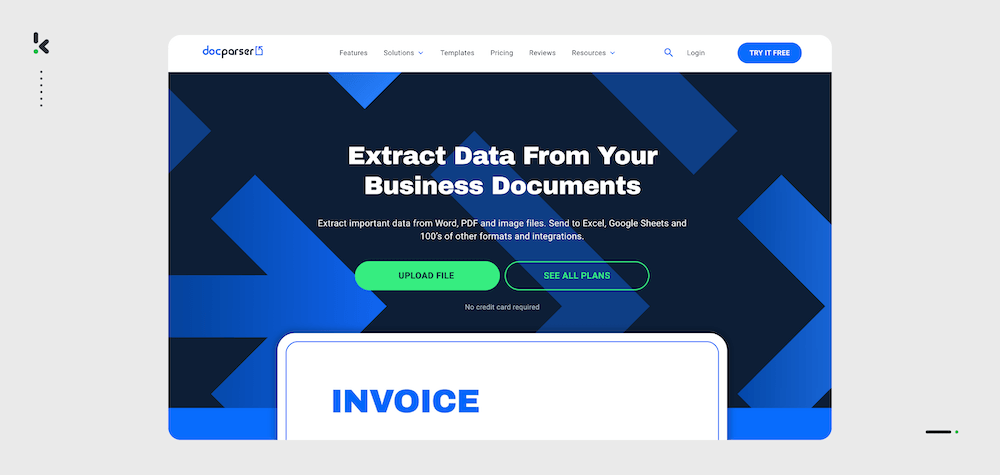

Docparser uses AI-enhanced templates to make extraction simple and code-free. Users can define parsing rules for consistent automation.
Features:
- No-code template creation for parsing
- Handles PDFs, scanned images, and email attachments
- Flexible output formats (CSV, Excel, JSON)
- Cloud-hosted with API integration
Criteria for Choosing the Right AI Agent
To choose the best AI agent for document data extraction, prioritise accuracy, compliance, integration, scalability, and reliable support.
Your ideal AI agent should not only deliver near-perfect data capture but also fit seamlessly into your workflows, meet security standards, and scale with your business needs. Evaluating these factors upfront ensures better ROI and fewer operational headaches later.
- Accuracy: At least 99% precision on your document types, handles complex layouts and multiple languages for consistent results.
- Compliance & Security: ISO 27001 certified, GDPR-compliant, and avoids storing data without explicit consent.
- Integrations: Developer-friendly REST APIs, SDKs, and ready-made connectors for ERP, CRM, and DMS systems.
- Scalability: Real-time and batch processing, elastic cloud architecture capable of handling high volumes effortlessly.
- Support: Responsive expert assistance, human-in-the-loop verification for edge cases, and custom model training options.
Best AI Agent Use Cases Across Industries
AI agents for document data extraction excel in industries where speed, accuracy, and large‑scale data processing are essential.
From finance to healthcare, these intelligent systems automate capture, structure data, and reduce manual work, improving workflows and compliance across sectors.
Finance
Automate invoice, receipt, and loan document processing with high accuracy. AI agents can flag anomalies in transactions and generate compliance‑ready reports, removing the risk of manual entry errors.
Manufacturing
Extract supplier data, quality control metrics, and production records directly into ERP systems. This enables faster decision‑making and helps improve supply chain efficiency.
Logistics
Capture shipment details, dates, and destinations from bills of lading and delivery receipts automatically. Real‑time extraction enhances tracking accuracy and reduces processing delays.
Government
Digitise citizen applications, permits, and registrations to create searchable, structured records. Processing becomes faster, helping agencies reduce backlogs and improve service delivery.
Healthcare
Process patient records and insurance claims securely while maintaining strict compliance standards. AI agents ensure accuracy across critical medical workflows.
Future Trends in AI Document Extraction
AI agents for document data extraction have evolved quickly, but we’re still only scratching the surface of what they can do. Over the next few years, several trends are set to redefine their role and how businesses think about document workflows entirely.
From point solutions to full workflow orchestrators
Today’s AI agents often focus on a single step in the document lifecycle: extraction. Soon, they’ll handle entire workflows, identifying a document type, extracting the right data, validating it, enriching it with external sources, and pushing it to the right system without human intervention. This won’t just speed up processes; it will eliminate entire chokepoints in operations.
Multi-modal intelligence: text, tables, images, and more
Most agents currently focus on text-heavy documents. The next generation will interpret mixed content seamlessly: diagrams in engineering reports, tables in scientific papers, signatures in contracts, even photographs in insurance claims. Being able to pull meaning from all those elements will make them far more adaptive in industries with complex inputs.
Human-in-the-loop for “beyond 99%” accuracy
Even the best AI agents occasionally need a second opinion. Future setups will blend fast AI extraction with targeted human review – not for every document, but only when confidence scores fall below a set threshold. This hybrid model can hit near 100% accuracy while keeping costs low.
Continuous learning and custom model refinement
AI agents will increasingly train themselves using feedback from every processed document. They’ll become better suited to your unique formats and terminology over time, without needing full retraining. This means a steady climb in accuracy with no extra workload for your team.
The future is clear: AI agents will move from acting as “smart readers” for individual files to becoming the backbone of automated document ecosystems. Instead of scattered tools and manual checks, businesses will run fully orchestrated, multi-modal, self-improving workflows. Document chaos will finally become a thing of the past.
Why Klippa DocHorizon Stands Out Among the Best AI Agents for Document Data Extraction
When it comes to automating document workflows, Klippa DocHorizon offers a comprehensive, AI-powered solution that excels at speed, accuracy, and flexibility – all while meeting the strictest compliance standards.
It combines OCR, real-time data validation, fraud detection, and seamless integrations into one platform, delivering accuracy above 99% and scalable automation for industries ranging from finance and healthcare to logistics and government.
Now part of the SER Group, recognized as a Leader in the Gartner® Magic Quadrant™ for Document Management, Klippa brings enterprise-grade AI document processing to teams worldwide. That makes it one of the strongest choices for organizations ready to modernize how they capture and use data.
What sets Klippa apart?
- Accuracy above 99% for extracting data across formats, layouts, and languages
- Fully automated workflows, from document capture to system integration
- Seamless connections with ERP, DMS, and accounting systems
- Fraud detection and rule-based validations built in
- GDPR-compliant data handling, masking, and anonymization
- Human-in-the-loop review for edge cases requiring absolute precision
- Developer-friendly API and intuitive no-code interface
- Fast, scalable implementations with transparent pricing
Want to see how Klippa can transform your document processing? Reach out to our team for a demo and see how we can help you automate, validate, and accelerate your workflows!
FAQ
Traditional OCR converts images to text but struggles with complex layouts, tables, or low‑quality scans. AI agents go further, using machine learning and natural language processing to understand document context, structure, and meaning, delivering cleaner, more accurate data.
AI agents can handle invoices, receipts, ID cards, contracts, shipping documents, patient records, forms, and more. Advanced solutions like Klippa DocHorizon can manage both printed and handwritten text, multi‑page PDFs, and even irregular layouts.
Top‑tier solutions, like Klippa, achieve above 99% accuracy, and with human‑in‑the‑loop review, accuracy levels can approach 100%, even for complex formats or poor scan quality.
Yes. Enterprise‑grade solutions include strict data privacy controls, GDPR compliance, masking, anonymization, and avoid storing data without explicit consent. Many also carry ISO 27001 certification.
Not necessarily. Modern solutions offer REST APIs, SDKs, and ready‑made connectors to integrate with your existing ERP, CRM, or DMS systems, meaning adoption can be incremental and low‑risk.
Yes. Solutions such as Klippa DocHorizon are trained on millions of document layouts across dozens of languages, making them ideal for global companies.
Processing times can be near‑instant. For example, Klippa DocHorizon delivers results in under five seconds, enabling real‑time workflows and reducing operational delays.
Finance, healthcare, logistics, manufacturing, and government agencies benefit from automated, accurate data capture, improved compliance, and reduced administrative overhead.
Expect multi‑modal intelligence (text, tables, images), full workflow automation beyond extraction, continuous self‑learning, and hybrid human‑AI verification for flawless accuracy.
Klippa DocHorizon stands out for speed, accuracy above 99%, strong compliance features, and integration flexibility. It offers real‑time extraction in under five seconds, GDPR‑compliant data handling, fraud detection, and seamless API/SDK connections, making it ideal for organizations needing both precision and scalability.